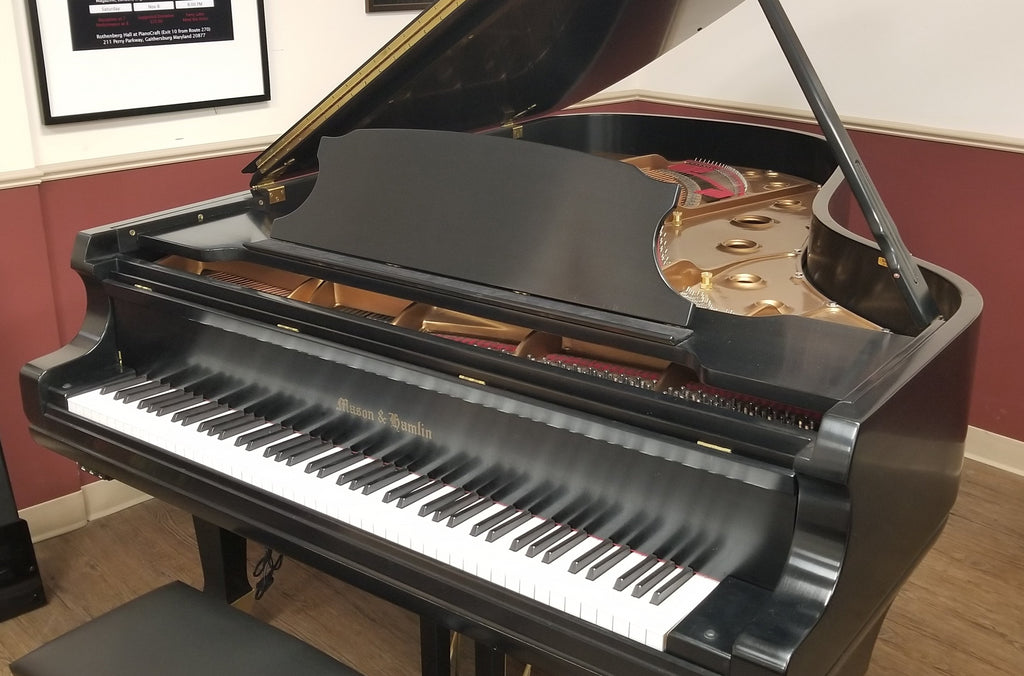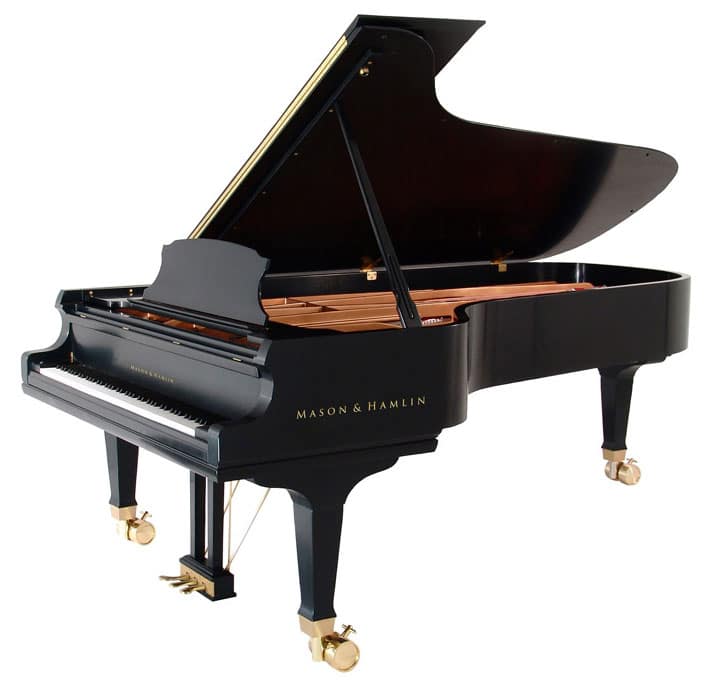
Internal parts for the verticals are made in Haverhill, then assembled in the company’s Sacramento factory, where it also installs PianoDisc systems.Īll Mason & Hamlin grands have certain features in common, including a wide-tail design a full-perimeter plate an extremely thick and heavy maple rim a solid spruce soundboard a seven-ply, quartersawn maple pinblock and the patented tension-resonator Crown Retention System. The 50″ model 50 vertical piano has also been reintroduced and redesigned, with longer keys for a more grand-like touch, and improved pedal leverage. The development of these three models was an especially interesting and costly project: in the process, the engineering staff resurrected the original design of each model, constructed new rim presses, standardized certain features, refined manufacturing processes, and modernized jigs, fixtures, templates, and machinery, improvements that afterward were applied to the company’s other models. Then, in fairly rapid succession, came the 6′ 4″ model AA, the 9′ 4″ model CC concert grand, and the 5′ 4″ model B. First came the 5′ 8″ model A and 7′ model BB, both of which had been manufactured by the previous owner. Refinements have been made to the original scale designs and other core design features. Since acquiring the company, the Burgetts have brought back most of the piano models from the company’s golden Boston era (1881–1932) that originally made the company famous. The company emphasizes limited-quantity, handbuilt production, and currently manufactures from 200 to 350 pianos per year. (You can read the somewhat lengthy and interesting history in The Piano Book.) In 1996 the Burgett brothers, owners of PianoDisc, purchased Mason & Hamlin out of bankruptcy and set about reestablishing manufacturing at the six-story factory in Haverhill, Massachusetts. Over the next 85 years, Mason & Hamlin changed hands many times.

By 1910, Mason & Hamlin was considered Steinway’s chief competitor. The company began making pianos in 1881 in Boston, and soon became among the most prestigious of the Boston piano makers. Within a few years, Mason & Hamlin was one of the largest makers of reed organs in the U.S. Mason was a musician and businessman and Hamlin was an inventor working with reed organs. Mason & Hamlin was founded in 1854 by Henry Mason and Emmons Hamlin. In China, the U.S.-made piano is branded “Henry Mason”. Note: The Mason & Hamlin trademark in China is owned by a different company, and that brand name is applied to a piano that has no relationship to the U.S.-made instrument or company. There is truly nothing else like it.Pianos made by: Mason & Hamlin Piano Co., Haverhill, Massachusetts Ultimately it is the sound that will captivate you with this piano. The finish is also very good – this is an attractive piano! The action is on the lighter side for a concert grand and is very responsive. Since this is the largest of the Mason & Hamlin pianos, it offers the ultimate if you appreciate the warm, blending sound of American pianos. Mason & Hamlin has perhaps the fattest tone of any piano. The soundboard has good crown which is evident in the rich, singing tone.Īmerican pianos generally have a fatter sound than the more focused European piano sound. So the performance and sound are on a high level. The good news about this Mason & Hamlin concert grand is that it was rebuilt fairly recently with new strings, tuning pins, damper felt, hammers and other action parts. This is why Mason & Hamlin pianos retain soundboard crown longer than other pianos. This metal bracing further supports the piano.

The wood is further reinforced with the patented Tension Resonator System.



 0 kommentar(er)
0 kommentar(er)
